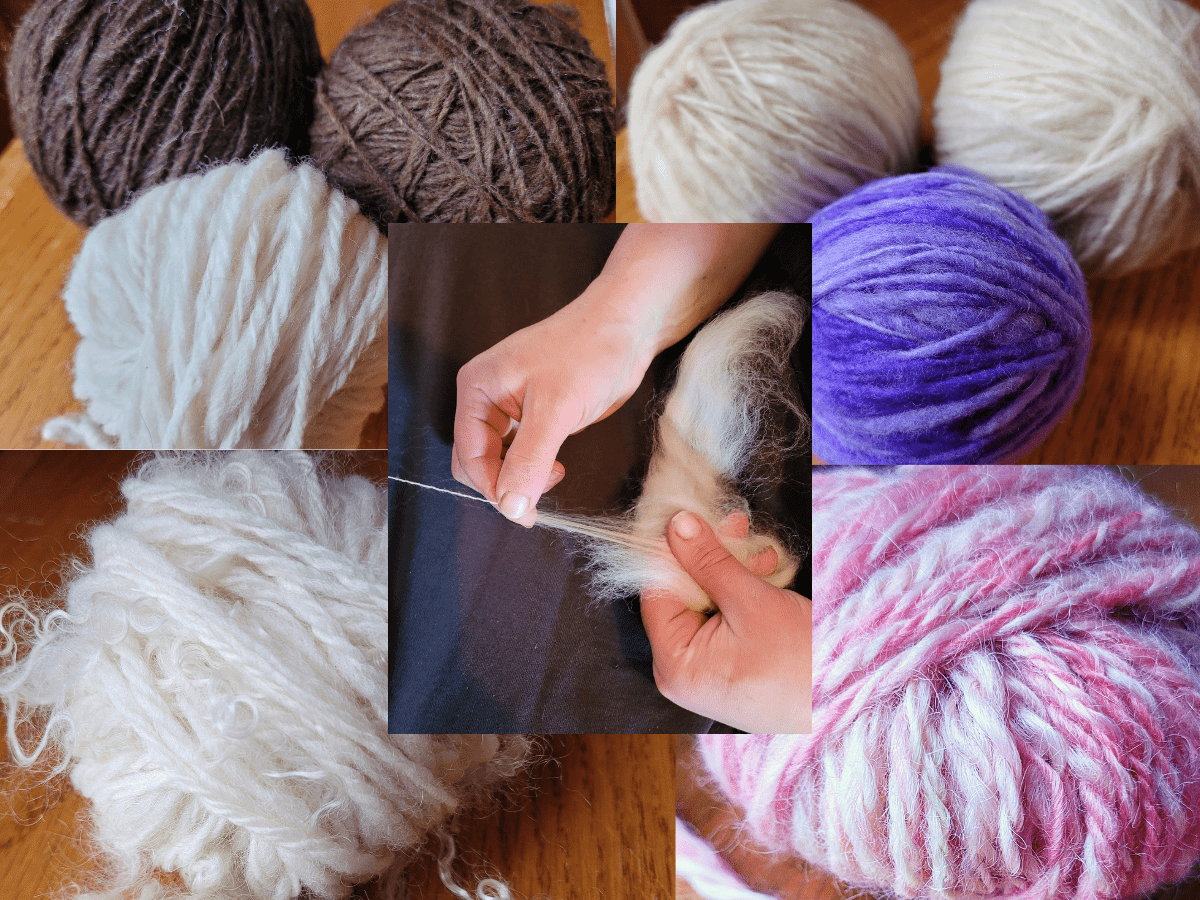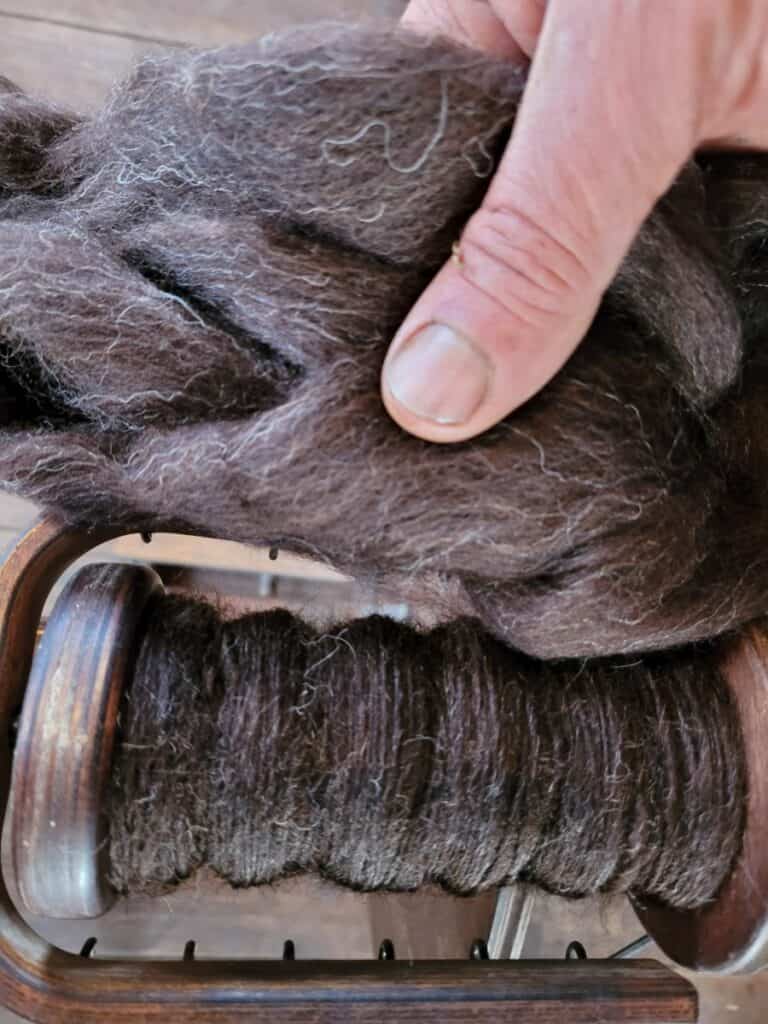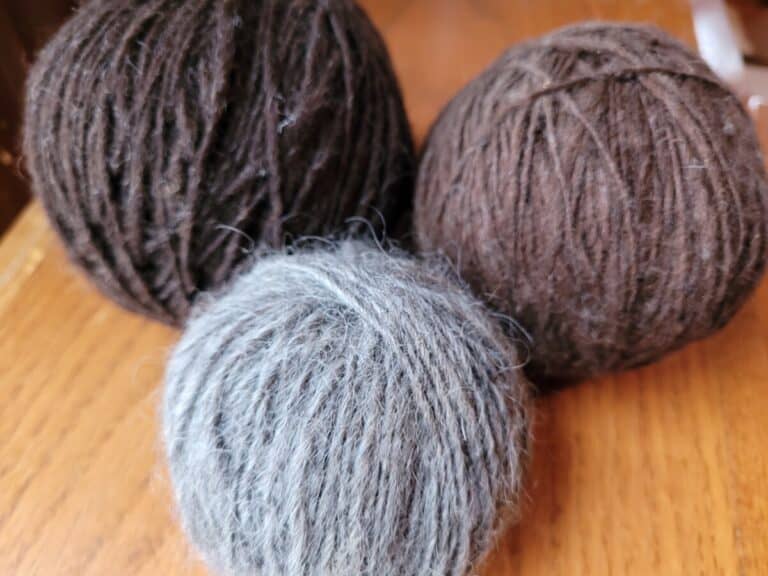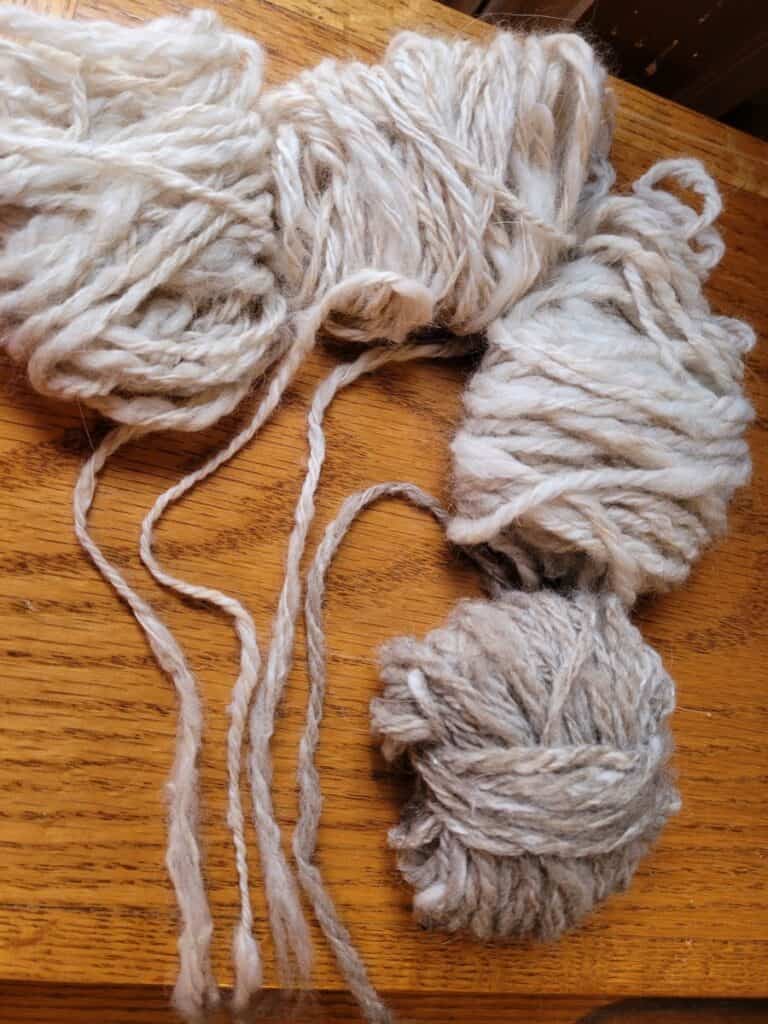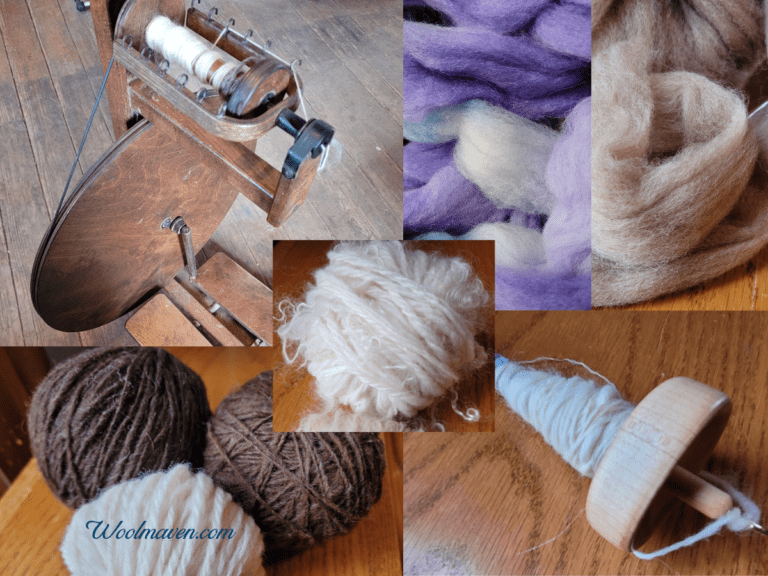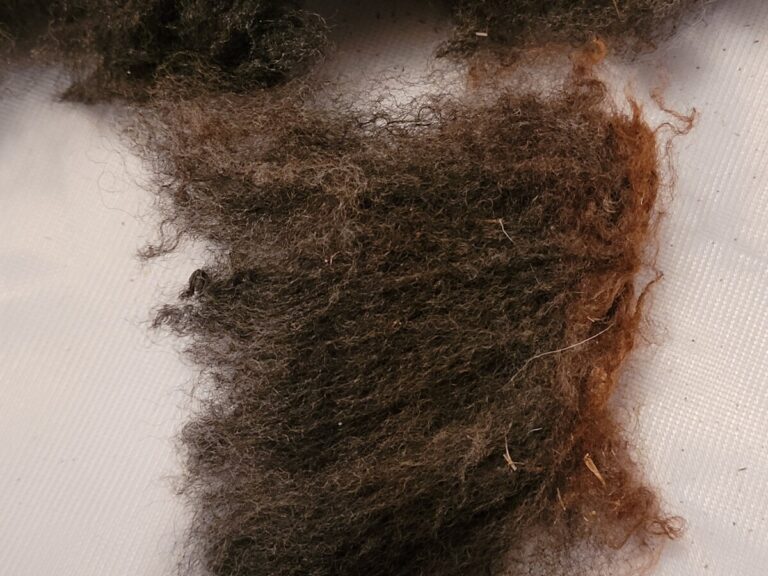7 Tips To Spin Yarn With Less Twist
It can be really frustrating when all you can spin are yarns with scads more twist than you want! How do you spin yarns with less twist and still have the yarn hold together?
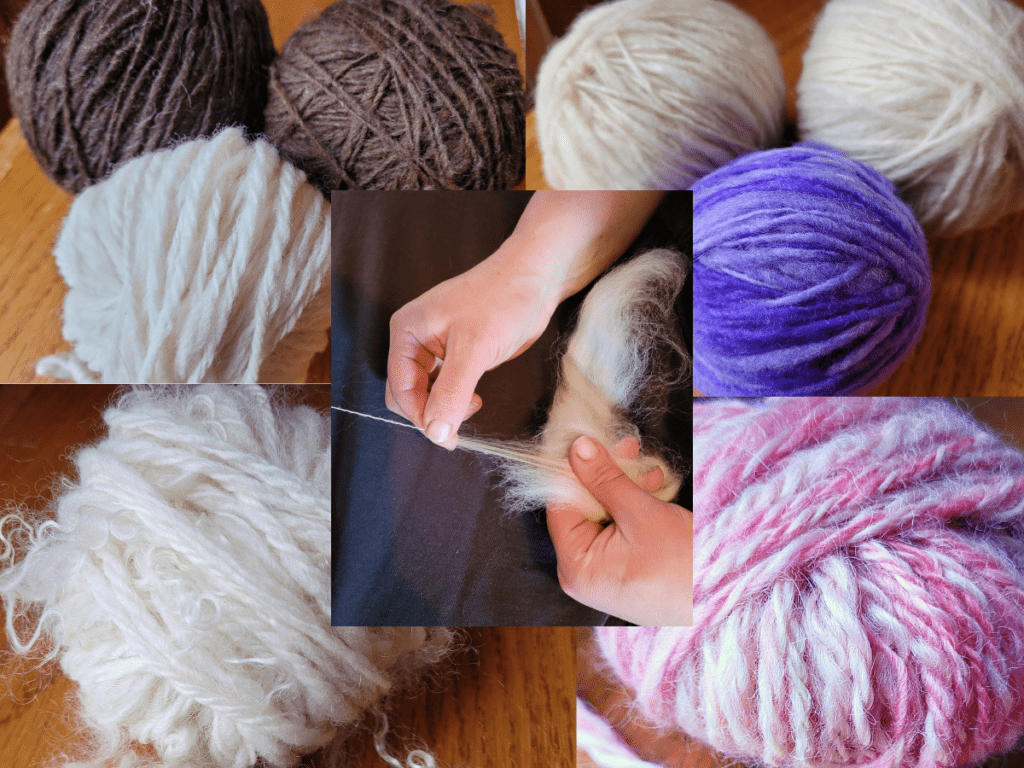
Use well prepared fiber
The first thing to do, or more accurately switch to if you are not using it, is well prepared fiber. By this I mean commercially prepared combed top or roving.
If you are having trouble with your spinning, do not add the complication of preparing your own wool into the mix.
When I was first learning to spin, this is where I added all kinds of complication to my spinning because I did not do a great job of fiber preparation.
At the time, I thought I was doing an acceptable job, now I realize, no, not so much!
I had a shorter wool that I could only spin with tons of twist, not to mention it being really thick and heavy.
Had I used something like combed top to learn with I would have had much more control over the yarn I was making, much earlier in my spinning.
Characteristics Of Easy To Spin Wools gives you a list of easy to work with traits that will be in most handspinner friendly fibers.
This post contains affiliate links, which means I receive commissions if you choose to purchase through links I provide (at no extra cost to you).
Looking for a great resource on which fiber to pick and how best to use it? Consider getting The Fleece And Fiber Sourcebook, filled with wonderful pictures and details on just about any wool you can find.
Switch to a different fiber
Sometimes the match between you and the fiber that you are using is not a great place to start.
If the wool or other fiber you are working with seems to be difficult for you, switch to something else and see if that helps.
I realize that you may want to work specifically with the fiber you have, if so, this tip won’t help you, but if you are trying to improve your spinning, it will.
The two main switches you can make are to a different breed or type of wool and to a longer staple length.
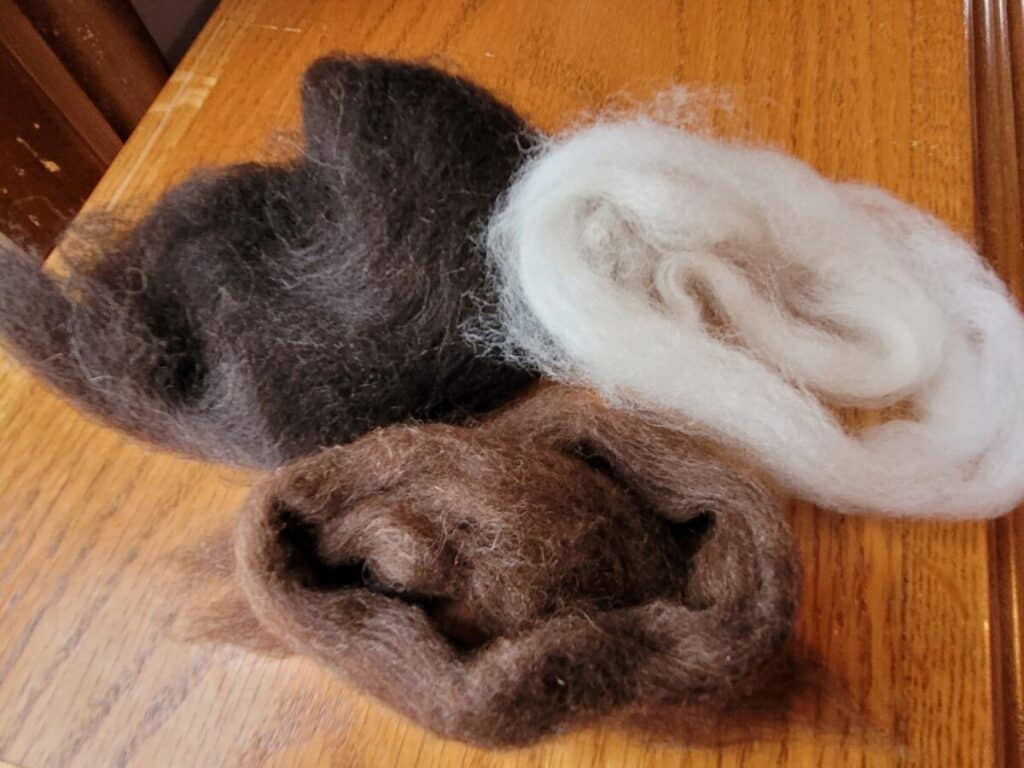
Use a different type or breed of wool
If you are having trouble keeping your yarn together without over twisting it, consider going with a different type or breed specific wool.
Choose a wool or breed that has some grip, or crimp in it, so that your wool will help you as you spin. Wool with crimp wants to stay together more than wool with little or low crimp.
Corriedale or Cheviot both have a nice crimp that holds together well. Corriedale is softer, Cheviot has bounce and is hard to felt, if that will help you choose between them.
Use longer staple length
If you are using a shorter staple length wool or other fiber, consider going with a longer staple length fiber, instead.
If you are looking for a super easy to work with, longer staple length wool, consider Romney Top. It’s long enough for you to draft without adding too much twist, yet not slip out of your fingers!
Something with a longer staple length will give you a bit more time to work with the fiber as you are spinning, before it slips up into the wheel.
This could be as simple as doing a little more investigating into your roving purchases before you buy.
Believe it or not, there is a noticeable amount of variation in sheep’s wool, from individual to individual.
If you want a longer staple length, yet you also want soft, consider Polwarth. I love working with Polwarth, it’s easy to use and wonderfully soft.
Most breeds have a significant range in both fineness and staple length. Make sure you are working with the longer stapled wool available for that breed.
What Is Staple Length And Why It Matters! goes into more details on staple length for handspinners.
Do not use the bargain fiber
If you are using a bargain fiber, like a bulk wool available for education, switch to an easy to work with fiber, like Corriedale or Blue Faced Leicester, instead.
The bargain bag will have too much variability, mainly shorter staple lengths, that are on the harder to work with end of things, which is not where you need to be!
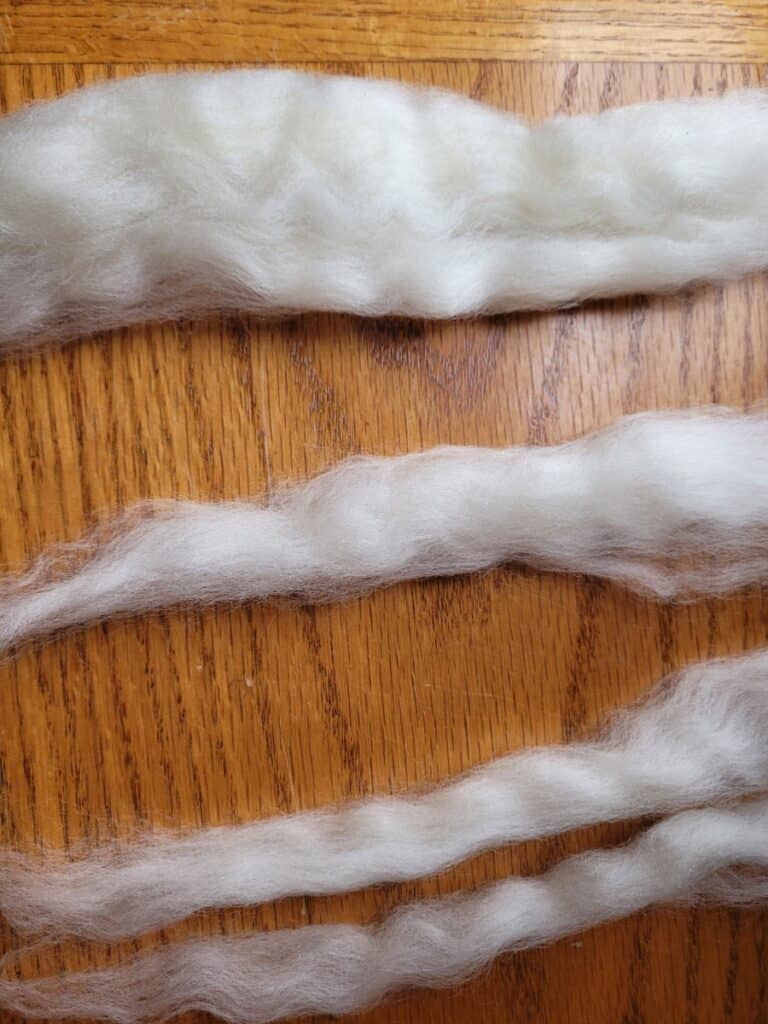
Predraft or split roving
Predraft or split the roving, before you even start spinning. I prefer to split, rather than predraft, but it really is about your preferences, not mine!
The less manipulation that you need to do with the fiber as you are spinning, the more likely it is that you will be able to get the twist you are looking for.
Splitting the roving gives you a bit less to do as you are spinning, so you can concentrate more on the yarn.
Roving or Combed Top gives you more information on choosing which fiber is best for you and your spinning.
Increase tension on wheel
If you increase the tension on the wheel, meaning set the wheel so that it takes in the yarn more aggressively, then you have less time to put twist into the yarn you are spinning.
Increasing tension is a easily overdone, you have to increase slowly by making slight adjustments or you’ll end up with too much uptake for you.
Since both too much and too little tension are both problems, and dependent upon you, finding the right tension is something you’ll do for every project.
Slow your treadling
Most spinners seem to try to speed treadle their way out of a problem, it’s almost like going faster will help you outrun the mess, when it actually makes the problem bigger and come on faster!
Good news, the fix here is easy: slow down your treadling! Faster treadling will increase the twist in your yarn, which is not what you need right now.
Anytime you are unsure of what you should be doing, or it seems like you are coming up to a challenging spot, slow down your feet.
You can go back up to speed later, but as long as you are learning or are having problems, like over twisting, go slow.
To be upfront, slowing your treadling speed is a tough one, since as soon as your attention wanders to something else, you are likely to speed back up to your default speed.
This means that you can easily slow your treadling for a few yards or a few spinning sessions, but for most folks, you’ll want another solution that is easier to keep doing for an extended time, like changing wheel ratios.
Change wheel ratio
Another wheel based change to get less twist in your yarn is to go with a bigger whorl, meaning less turns of the bobbin per revolution of the wheel.
On my wheel, I just move the tension band to the larger whorl on the bobbin to get less twist. I don’t know what the actual ratios are, I go by looks.
If you are more familiar with the ratios of your wheel, you are looking for a lower number to turn the bobbin more slowly.
For example: if your wheel has 3:1, this would put less twist in the yarn than a 8:1 or a 18:1.
For less twist choose the larger whorl or the lower ratio. For more twist, choose a smaller whorl or a higher ratio.
Flyers and Ratios by Hilltop Cloud gives you a few more details on wheel ratios, if you are interested.
Check as you go
Be sure to check your spinning as you are spinning. You can easily do this by stopping your treadling and seeing how the yarn looks when it is held loosely.
If you have a sample of what you are shooting for, keep it handy and compare your sample to your spinning and see if you are keeping on track.
I have to admit, this one is harder, or actually less useful to me.
Or, more accurately, it is only a sign that you are headed in the right direction, not necessarily proof that you have it right.
I find that I really don’t know what I have until I set the yarn and knit or crochet it up. Only then I can tell if the yarn is the way I want or need it to be.
Until I have some finished project, even if it is just a test swatch, I am just guessing. Granted, the more experience I have, the better my guessing will be!
Be mindful while spinning
This sounds a bit “out there” but give this one some thought, you need to stay focused on what you are doing!
This is especially true when you are trying to move away from your default spinning, which is whatever you normally spin.
Your default spinning is the way you’ll spin when you stop paying attention.
If that is not the spinning results you want or need, you’ll have to focus to break away from your habits.
If I am just spinning for fun or something that I am just letting do whatever feels right, then I can easily talk or take in a podcast or two.
I find that if I really need to be paying attention to the yarn, especially when working to change a habit, I can not be listening to a podcast or talking.
It has to be spinning only. If you find that you are having trouble keeping your focus, eliminate distractions until you can focus on your spinning.
I have also found that taking a mental break, especially once I get more than a little frustrated, makes the technique or change easier the next time I’m at the wheel.
It’s almost like my mind needed some time to ruminate and figure out how to coordinate for the results I need.
Give yourself a break and come back to it tomorrow and see if that helps. It seems to makes a big difference to me.

